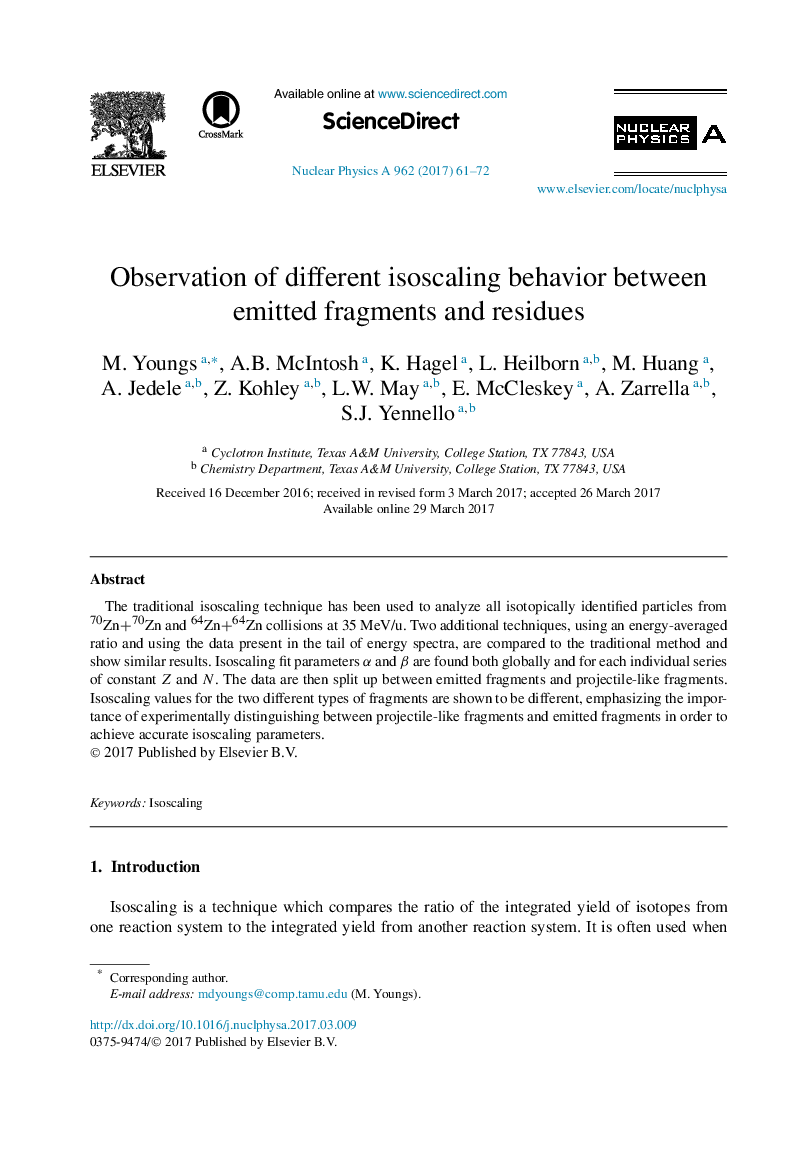| Article ID | Journal | Published Year | Pages | File Type |
|---|---|---|---|---|
| 5494043 | Nuclear Physics A | 2017 | 12 Pages |
Abstract
The traditional isoscaling technique has been used to analyze all isotopically identified particles from 70Zn+70Zn and 64Zn+64Zn collisions at 35 MeV/u. Two additional techniques, using an energy-averaged ratio and using the data present in the tail of energy spectra, are compared to the traditional method and show similar results. Isoscaling fit parameters α and β are found both globally and for each individual series of constant Z and N. The data are then split up between emitted fragments and projectile-like fragments. Isoscaling values for the two different types of fragments are shown to be different, emphasizing the importance of experimentally distinguishing between projectile-like fragments and emitted fragments in order to achieve accurate isoscaling parameters.
Related Topics
Physical Sciences and Engineering
Physics and Astronomy
Nuclear and High Energy Physics
Authors
M. Youngs, A.B. McIntosh, K. Hagel, L. Heilborn, M. Huang, A. Jedele, Z. Kohley, L.W. May, E. McCleskey, A. Zarrella, S.J. Yennello,
